Everything You Wanted to Know about the US Navy Nuclear Propulsion Officer Candidate (NUPOC) Program
"The Best Deal in the Navy" - Information for you to make an informed decision and learn about the NUPOC Program which I joined in 2010.
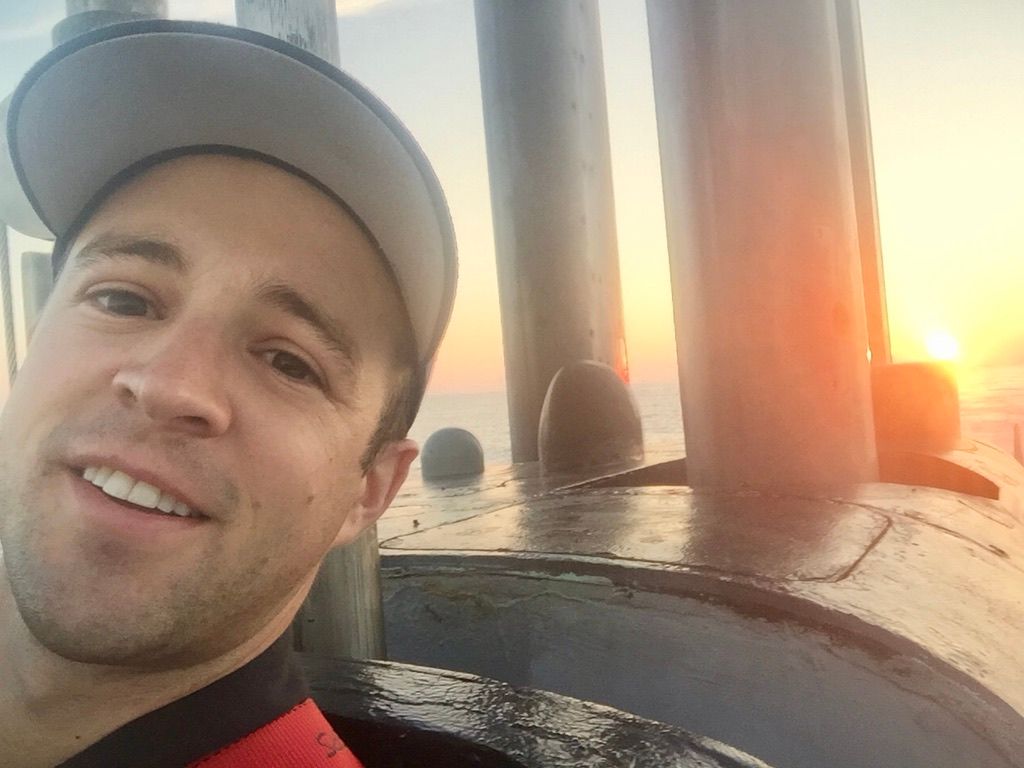
- ❓ Why This Webpage Exists
- 🤷♂️ What is the NUPOC program?
- 👨💼 What jobs can you do if you are accepted into NUPOC?
- ✅ What are the requirements to join NUPOC?
- 📈 What are the Benefits of Joining NUPOC?
- 📝 What's required of me while in school?
- 🎓 What happens after I graduate?
- ⚓️ Submarine Officer
- 🚤 Surface Warfare Officer
- 👨🏫 Instructor
- 👩💻 Naval Reactors Engineer
- 💰Tell Me More About The Money
- 🧮 How to Calculate your Pay
- 🗣 $205,627 - Total amount you could get while in college if you go MAX NUPOC
- 🏃♂️How Does the Physical Fitness Assessment (PFA) Work?
- 🚌 Officer Candidate School (OCS) Newport, Rhode Island
- 🔮 Navy Nuclear Power School (NNPS) Charleston, SC
❓ Why This Webpage Exists
It's difficult to find information out there about what is often touted as "the best deal in the Navy." That's unfortunate, as the 5 year commitment is nothing to throw any old cat at. Folks ought to know what they are getting into. Pre-COVID time, The Navy had a great and FREE educational tour, or VIP trip, where prospective candidates got flown to San Diego (west coasters) or King's Bay (east coasters) to tour active nuclear submarines and conventional surface ships in an effort to help them make an informed decision.
Since that trip not currently longer available, and I've been in the business a while now, I figured I should try and get some of what I know out there for anybody going through the same decision process that I went through back in 2009. I joined the NUPOC program in my junior year at UCLA while I was working towards my Bachelor's Degree in Electrical Engineering. Originally just planning to do my 5 years and get out, I have now been in the Navy for over 10 years and can honestly say it's been the adventure of a lifetime. I am so glad to have made the decision, though I have to be clear - there were times I probably wouldn't have said that. The job is NOT easy!
The following will be an FAQ-style write up on what I think about the NUPOC program and how I normally talk about it with a prospective candidate. With more than 2 years of Navy officer recruiting under my belt, I've spoken with folks from many different backgrounds about it and I always try to impart this advice first: the decision is your own, and you are responsible for getting as much information as you can such that your decision is an educated one. I imagine that's why you're here, so let's get started.
🤷♂️ What is the NUPOC program?
At the time of writing this, the Navy operates roughly 100 nuclear power plants across the world. 71 submarines each of which is powered by 1 reactor, 11 aircraft carriers each of which is powered by 2 reactors, and a handful of training reactors (old subs) and other reactors in the process of coming online or being decommissioned. While the national sentiment on nuclear energy is quite low, the Navy's appetite for more submarines and aircraft carriers is exceptionally high. I may be partial, but if you ask my XO who's a helicopter pilot (Executive Officer is the officer who is second in command), he would tell you that in his extensive studies and analysis of national security at the War College, submarines are our #1 asset for national defense for reasons he can't tell you or he would have to kill you. 😛
So, now that we know the Navy has nuclear reactors and they are important, we must understand that the Navy needs to EMPLOY people to operate and maintain those reactors (and of course the submarines and carriers that they power 😆. Sometimes we forget that).
In general, the Navy needs enlisted personnel to operate the equipment (Nuclear-trained machinist mates, electricians, reactor operators, and lab technicians) and officers to provide supervision, strategic planning, and incident response. As you might have guessed, these jobs require a unique blend of smarts, leadership, and confidence that is difficult to find. Individuals who meet the Navy's requirement for nuclear-trained jobs often have a world of opportunity available to them.
Enter the NUPOC program. At the most basic level, NUPOC is a way for the Navy to compete with the private sector for smart people. The Navy pays a sizable stipend to college students who meet the minimum requirements in exchange for committing to 5 years as an active duty nuclear-trained officer after graduation. It's similar to ROTC in that it is a means of getting money while studying and a commission upon graduation, but is significantly different in many ways, most notably there are no extra classes required, no uniform requirements, and the money goes directly to your checking account like a salary and not to tuition like a scholarship does.
I did Army ROTC for 2 days when I was at UCLA and it definitely wasn't for me at the time. I was pretty laser-focused on partying and my outdoor backpacking/climbing club. Somehow found time to get circuits and digital signal processing homework done. 0530 PT (physical training) and extra classes weren't appetizing menu items for me at the time.
👨💼 What jobs can you do if you are accepted into NUPOC?
There are 4 jobs available, they are: Nuclear Surface Warfare Officer (SWO), Submarine Warfare Officer, Nuclear Power Instructor, and Naval Reactors Engineer (NRE). The career path is different for each job which I will cover later on.
For ease of understanding, I divide the 4 jobs into two categories. The first category is Fleet, or Unrestricted Line Officer. SWO and Submarine Officer fall into this categories. For now think of these as operational roles where you are "attached" to a ship or submarine and directly responsible for mission accomplishment. Like in the movies, you will give orders, lead sailors, and strategize missions. You essentially would be the Lieutenant in Hunter Killer that Gerard Butler, who plays the Commanding Officer, addresses when he comes down from the bridge and says "Last man down, hatch secured, Officer of the Deck, submerge the ship." Yup, the Officer of the Deck is 24 year-old you. Play the game for roughly 16 more years and you get to BE Gerard Butler. The career progression for an Unrestricted Line Officer is designed to culminate with major command, though may be shorter or longer depending on performance and also what direction your life takes you.

The second category is Support, or Restricted Line Officer. This category covers the Instructor position and the Naval Reactors Engineer position. As an instructor, you would teach at either the nuclear power school or prototype (training reactor) based in Charleston, South Carolina. This is the school that we send every nuclear-trained enlisted and officer individual through. As a Naval Reactors Engineer, you work at an office building on a Navy base in Washington, DC called the "Navy Yard". You are a commissioned officer but usually wear business casual dress to work. Think of this job as a technical program manager role where are responsible for all major technical decisions regarding design, procurement, operations, maintenance, training, and logistics of all of the reactors that the Navy has in service. You work closely with the prime contractor, Bechtel Plant Machinery, Inc., Knolls Atomic Power Laboratory, the ships and subs, and the shipyards to ensure maximum readiness and safety of the nuclear power plants. I call these folks the "velcro shoes" of the navy. If you don't get the joke, then you probably would make a great NRE! 😂

✅ What are the requirements to join NUPOC?
Minimum requirements are outlined in the Program Authorizations. At the time of writing:
- Must be a U.S. Citizen (for your Top Secret Security Clearance).
- At least 19 years old and no older than 29 by the time of commissioning.
- Must have at least 1 year (2 semesters or 3 quarters) of college-level calculus and calculus-based physics with a grade "C" or better.
These are minimum requirements. Waivers are available if your degree plan doesn't require calc/physics or for ages up to 31. Honestly waivers are available for just about anything if you are the right fit for the program. Additionally, AP courses may be used as credit for half of the calc/physics requirements.
Now on to what a competitive profile looks like:
- For Fleet (Submarine or Surface) positions GPA > 3.2.
- For Instructor GPA > 3.5
- For Naval Reactors Engineer GPA > 3.7 🤓
- SAT Math score > 680 and/or ACT >= 30
📈 What are the Benefits of Joining NUPOC?
While still completing your degree, there are many benefits to being in the NUPOC program.
- $6368 per month while in school for our Bay Area students (Stanford, UC Berkeley, San Jose State, Santa Clara University). Your Pay is calculated based on E-6 rating and is dependent upon location. More on how to calculate your pay to follow.
- Salary is upgraded to rate of an E-7 if you refer someone to the program.
- $15,000 signing bonus for Fleet positions (submarine/surface) and Naval Reactors Engineer.
- $2,000 bonus upon completion of Navy nuclear training.
- Time at school counts as active time in service which can be credited towards an eventual pension. You also accrue 30 vacation days per year while in school that you can use after graduating.
- Immediate technical leadership experience. You will be the Division Officer for a group of enlisted sailors.
- Full medical and dental coverage via TRICARE upon entering the program.
- Military ID card gets you on bases across the world and discounts at many retailers. I used mine for free ski lift tickets at Alpine Meadows back in 2010.
I will try to break these down in more detail.
📝 What's required of me while in school?
- Check in monthly with your recruiter. Provide updated transcripts after every Fall and Spring semester/quarter.
- Maintain your GPA > 2.8
- Pass the semi-annual Physical Fitness Assessment (PFA). More on this later
- Don't do drugs. You need to provide a urine sample at least once a year and may be subject to random urinalysis not to conflict with your studies.
- If anything out of the ordinary happens, i.e. major medical issue like surgery or you get in trouble at school or with the law, inform your recruiter.
That's it! You get paid to get good grades.
🎓 What happens after I graduate?
It depends on which job you select. Fleet "unrestricted line" positions (submarine officer, surface warfare officer) will attend Officer Candidate School (OCS) in Newport, Rhode Island while support "restricted line" positions (instructor, Naval Reactors Engineer) will attend Office Development School (ODS) also at Newport, Rhode Island. OCS is 12 weeks long while ODS is 5 weeks long. Both courses are designed to indoctrinate you to Navy life and customs and too instill important values such as discipline, leadership, and accountability. OCS is much more physically demanding and intense. ODS is essentially "OCS-lite" and is the course where the Navy sends its professionals (doctors, lawyers, etc.) for indoctrination.
After that, your journey depends on the job that you choose. I will detail each path individually since they all differ enough to warrant their own sections.
⚓️ Submarine Officer
Official Navy Brochure on Submarine Officer Path
Here are the broad strokes on the next five years of your life as a nuclear submarine officer!
- Officer Candidate School - 12 weeks - Newport, Rhode Island
- Navy Nuclear Power School (NNPS) aka "Nuke School" - 24 weeks - Charleston, South Carolina
- Nuclear Power Training Unit (NPTU) aka "Prototype" - 26 weeks - Charleston, South Carolina
- Submarine Officer Basic Course (SOBC) - 12 weeks - Groton, Connecticut
- Sea Tour as a Junior Officer ("DIVO Tour" or "JO Tour") - 36 +/- 3 months - Various Locations
- Shore Tour as Junior Officer - 24 months - Various Locations.
Once you have completed your five year active duty commitment, you are eligible to sign a Department Head contract, which would commit you to another sea tour after your shore duty with increased responsibility and pay. Often, the detailers may be able to sweeten the deal for you by cutting you orders to Navy Postgraduate School in Monterey or guarantee a homeport or submarine platform, but that's a topic for future you to learn more about.

🚤 Surface Warfare Officer
Official Navy Brochure on SWO - Nuclear
Broad strokes of your initial commitment if you are selected for Surface Warfare Officer (SWO) - Nuclear:
- Officer Candidate School - 12 weeks - Newport, Rhode Island
- First Sea Tour aka "Conventional DIVO Tour" - 24 months - Various Locations
- Navy Nuclear Power School (NNPS) aka "Nuke School" - 24 weeks - Charleston, South Carolina
- Nuclear Power Training Unit (NPTU) aka "Prototype" - 26 weeks - Charleston, South Carolina
- Second Sea Tour aka "Engineering DIVO Tour" - 28 months - Aircraft Carrier
- Shore Tour as a Junior Officer - 24 months - Various Locations
Similar to the submarine path, you will have the option to continue serving as a nuclear-trained SWO as your advance in rank and take on more management responsibility. The next segment is called your Department Head Tour, where you would again complete a "conventional" (non nuclear) tour aboard a cruiser, destroyer, littoral combat ship (LCS), etc. followed by a nuclear tour aboard an aircraft carrier. This conventional/nuclear theme continues as you do to Executive Officer and Commanding Officer if you perform well and promote on schedule. Note that you (most likely) will not ever command an aircraft carrier, that's a position held by an aviator.

👨🏫 Instructor
As an instructor, you will teach at the Navy Nuclear Power School (NNPS) or Nuclear Power Training Unit (NPTU) aka "Prototype" located in Charleston, SC. As a Restricted Line Officer, you will attend Officer Development School (ODS) vice the more rigorous Officer Candidate School (OCS) and have fewer options for career extension if you want to make a career of the Navy. On the other hand, you wont deploy and can expect more location and time certainty than the fleet officer positions.
NPTU Instructor path:
- Officer Development School (ODS) - 5 weeks - Newport, RI
- Navy Nuclear Power School Student (NNPS) - 6 months - Charleston, SC
- Nuclear Power Training Unit Student (NPTU) - 6 months - Charleston, SC
- NPTU Instructor - 4 Years - Charleston, SC
NNPS Instructor path:
- Officer Development School (ODS) - 5 weeks - Newport, RI
- Navy Nuclear Power School Instructor (NNPS) - 5 Years - Charleston, SC
What's the Difference Between NNPS and NPTU?
👩💻 Naval Reactors Engineer
As a Naval Reactors Engineer, you live and work in Washington DC at the Naval Reactors HQ in the Navy Yard. While you are indeed a commissioned Naval Officer, most days you come to work in business attire (shirt + slacks) and work in an office environment.

Naval Reactors is responsible for all aspects of the Navy Nuclear Propulsion Program including research, design, construction, testing, operation, maintenance, and ultimate disposition of spent cores. This includes all related facilities, radiological controls, and environmental, safety, and health matters, as well as the selection, training, and assignment of personnel. All of this work is accomplished by a lean network of dedicated research labs, nuclear-capable shipyards, equipment contractors and suppliers, and training facilities, which are centrally controlled by a relatively small Naval Reactors Headquarters staff (over 500 employees) in Washington, D.C.
Naval Reactors operates under the authority granted by Executive Order 12344 as an integrated organization within the Department of Energy and the Department of the Navy. Approximately half of NR Headquarters employees are active duty military personnel, one fourth are Department of Navy civilians, and one fourth are Department of Energy civilians.
Because of the highly complex nature of nuclear technology, a Headquarters staff expert makes all major Program-related technical decisions regarding design, procurement, operations, maintenance, training, and logistics. Headquarters Engineers set standards and specifications for all Program work, while our representatives in the field monitor the work at our laboratories, prototypes, shipyards, and prime contractors.
To carry out these responsibilities, NR Engineers function as technical managers in the following disciplines: Reactor design, Materials development, Testing and quality control, Components (pumps, valves, heat exchangers, etc.), Instrumentation and control, Shielding, Reactor physics, Fluid systems design, Chemistry and radiological controls, Electric Power Generation and Distribution, Embedded Systems and Network Cyber Security.
A typical Engineer will be responsible for several projects, equipment types or designs. The Engineer has responsibility for technical matters which can entail: Reviewing and approving equipment designs, Allocating project funds, Technically directing laboratory and contractor efforts, Ascertaining equipment test requirements and reviewing/approving test results, Responding to fleet engineering problems by coordinating technical investigations and approving corrective actions, Determining the scope of work and timelines to support future projects.
Based on over six decades of engineering experience in nuclear propulsion, the headquarters organization exercises exacting control over all aspects of the Program, demanding technical excellence and discipline unparalleled among nuclear programs.
If you are selected for this role, your path looks like this:
- Officer Development School (ODS) - 5 weeks - Newport, RI
- S6G Training (nuclear "work/study") - 9 weeks - Washington, DC
- Prototype Visit and Learning- 2 weeks - Charleston, SC
- Bettis Reactor Engineering School (BRES) - 6 months - Pittsburgh, PA
- Shipyard Training - 3 weeks - one of the Navy's East Coast shipyards
- Expended Core Facility Training - 1 week - Idaho
- Post-BRES Seminar Series - 6 months - Washington, DC
- Naval Reactors Engineer - 4 Years - Washington, DC
Beyond 5 years of service, there are limited options for an NRE to stay in the Navy and promote to the grade of Lieutenant Commander (LCDR). The majority of NREs resign their commission and continue to work for Naval Reactors as a DON employee (Department of the Navy) or seek employment elsewhere. Many choose to continue serving as an officer in the Navy Reserve. Those that elect to continue as a DON employee are typically hired on at a GS-14 rating. Those that perform a lateral transfer into another Navy Officer job are highly competitive for: Engineering Duty Officer, Intelligence, Information/Cyber Warfare, and Human Resources (other Restricted Line Officer jobs).
💰Tell Me About The Money
The Navy pays you quite well for being a student. I remember when I received my first payment at UCLA when I was still driving my 1990 Honda Civic, sharing a fraternity room for ~$600/month, including food 😲, and working 20-30 hours per week at the bike shop and outdoor recreation center fo ~$22/hour. In short order, I had purchased a $1000 climbing rack, bought lots of beer for the fraternity, signed up for Boulder Outdoor Survival School a life-changing experience, and purchased a plane ticket to Europe for that summer. I also went heli-skiing and bought a full-suspension mounain bike. Times were good and I was definitely learning how fun life could be with cash burning a hole in my pocket 😂. I stopped taking aid from my parents and was completely independent. What a unique feeling. I also invested the bulk of that money in low-fee index funds which has produced enough return in the last 11 years to allow me to take a mini-retirement in 2021.


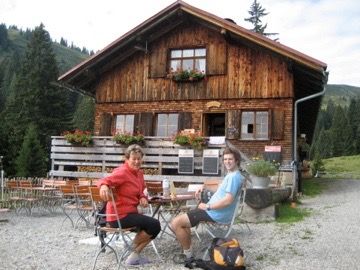


That being said, don't join the program because it will make you rich (it's a great-paying job, but you wont be Jeff Bezos). And also be advised RIGHT NOW that being a nuclear trained officer is incredibly difficult. You will work for your money, no doubt.
All of the NUPOC advertisements out there quote different numbers for "How much money you can make while in NUPOC." Ironically, most of them underestimate the value of the money - probably because whoever wrote the material was not based in the Bay Area, which has the highest cost of living in the U.S. Since you are paid as an E-6 (or E-7) when you are in NUPOC, the following is really a lesson in how military members are paid.
🧮 How to Calculate your Pay
Every year, DFAS (Defense Finance and Accounting Service) puts out Military Pay Tables and Information. Following that link, I click on the link for "Enlisted Members (Posted Dec. 2019)". This table shows pay grade (i.e. rank) on the left hand column with lowest rank at the bottom, E-1, or "Seaman Recruit," up to the ghiest, E-9, or "Master Chief Petty Officer". The top row has Years of Service where "2 or less" means "less than 2 years of service" or "Over 4" means "more than four years of service." For a brand new NUPOC student, find the number that corresponds to E-6 and "2 or less," which in this case is $2693.70 (see highlight in image below).

This amount, $2693.70, is called your Basic Pay, and only forms a fraction of your total pay. The next piece to look at is your Basic Allowance for Housing (BAH).
To find this amount, you first need to go to the Defense Travel Management Office BAH Calculator. Your duty zip code will be where you live, for this example 94704 for UC Berkeley, and Pay Grade will be E-6. Press 'calculate' and a new window should appear that looks like this:

Assuming you don't have any dependents (usually children and/or spouse), you would receive $3126/month BAH in addition to your basic pay. Adding both of these together, your monthly take-home, before tax, pay is $5819.70. Note this does not include your one-time $15,000 bonus! Multiply $5819.9 * 12 = $69,836.40 annually. That's pretty wild just to turn your homework in on time and pass your classes, which you would have done anyways right? If you've read about the magic of compounding interest, understanding that you could be investing this at age 20 is a Pretty Powerful Prospect.
💸 Before tax?
Yup, I said it. Welcome to being a productive adult of American society. Now pay your taxes. This article isn't a lesson on tax law, so I'll be brief. For 2020, annual takehome of $40,126 to $85,525 puts you in a 22% tax bracket. This is taken out automatically each paycheck, such that what you actually see in your monthly Leave and Earning Statement (LES) is less than the above mentioned $5819.70.
!! HOWEVER !! Your Basic Allowance for Houosing (BAH) is 100% tax-free. So what you need to do is find your effective annual income by subtracting your annual BAH ($3126 * 12 = $32,324) from your annual take-home ($69,836.40 - $37,512) = $32,324. This number, $32,324, is what the IRS will tax you on as annual income, putting you down in the 12% tax bracket!
You can think about the benefit of being in a lower tax bracket (because BAH is untaxed) like this:
If you were taxed 22% on the full $69,836.40 that you make. You have to pay the IRS $15,364 that year.
$69,836.40 * .22 = $15,364 paid in taxes
But you in fact are taxed at 12% rate on your Basic Pay of $32,324.
$32,324 * .12 = $3,878.88 paid in taxes
$15,364 - $3,878.88 = $11,485.12 that stays in your pocket!
🗣 $205,627 - Total amount you could get while in college if you go MAX NUPOC
Real quick for fun, let's imagine that you take FULL advantage of the program. We have to make the following assumptions:
- You are in the program for the full 30 months.
- You are accepted into the program at the saem time as your friend, who you referred, earning you a promotion from E-6 to E-7 pay grade.
- You are single (no dependents)
- Inflation rate of 0% - Military pay charts usually increase 1-3% per year to keep pace with inflation. For purposes of this example we will just assume current year (2020) numbers through the 30 months you are in the program.
For the first 24 months, you make E-7 salary at "2 years or less".
Basic Pay $3,114.30/month * 24 months = $74,743
BAH $ 3183.00/month * 24 months = $76,392
Total = $74,743 + $76,392 = $151,135
For the next 6 months, you make E-7 salary at "Over 2".
Basic Pay $3,399.00/month * 6 months = $20,394
BAH $ 3183.00/month * 6 months = $19,098
Total = $20,394 + $19,098 = $39,492
Add those together...
$151,135 + $39,492 = $190,627
But don't forget your $15k bonus...
$190,627 + $15,000 = $205,627
🏃♂️How Does the Physical Fitness Assessment (PFA) Work?
The semi-annual Physical Fitness Assessment (PFA) encompasses both the Body Composition Analysis (BCA) and Physical Readiness Test (PRT). Requirements are different depending on your age and sex, but the test is the same across the board. The day before is the BCA where you are required to "weigh in" and measure your height. Maximum weights are given for each height, but if you exceed that, you may still qualify if you are under the maximum Body Mass Index (BMI) standard for your age.
Everything You Wanted to Know about the Navy's Body Composition Assessment
Height and Weight Maximums Chart:

Graduated Body Mass Index:

The next day you will perform the PRT. First you must perform maximum number of curl-ups (sit ups) within 2 minutes, then rest, then maximum number of push-ups within 2 minutes (resting only in the "up" position), then rest, then run a mile and a half. You must score above the probationary tier to pass. Note that the below tables are divided male/female and for individuals 20-24 years old. As you get older, the targets become softer. Additionally, if you score an overall Excellent Low or better, you are eligible to "validate" your next test such that you only run the PRT once per year (you must still pass the BCA twice per year). Validating your PRT does not in anyway affect your performance evaluations and is a way for the Navy to cut down on the logistical burden of administering the tests.
** Sit ups will be replaced by planks soon, but I don't have specifics on that at the moment. You should expect to do planks at OCS.
Full score tables and Physical Readiness Test (PRT) information can be found here.

🚌 Officer Candidate School (OCS) Newport, Rhode Island
If you elect either of the Fleet options (Submarine Warfare, Surface Warfare), then after graduating university with your Bachelors Degree (or higher) you will attend 12 weeks of officer indoctrination at Officer Candidate School (OCS). While at OCS, you will live in a barracks-style dorm room and earn Basic Pay equal to that of an E-5. Since room and board is provided, you will not receive BAH while at OCS.
The below video "Face of OCS" is a great introduction to the course. Shout out to my Drill Instructor, Gunnery Sergeant Bamba who shows up at 7:13, 9:49, and 13:31.
OCS is designed to test your limits physically and mentally. You will question "why" you are signing up to become a naval officer and your instructors will test your commitment to the Navy. For many candidates, it will be the most difficult undertaking of their lives.
Weeks 1-4 are called your Indoctrination Phase. You will be referred to as an "indoctrination candidate" and focus on militarization, military drill, and physical fitness. There will be endless yelling, marching, running, and pushups designed to break you down such that you can build up into an outstanding naval officer. On "Wakeup Wednesday" you meet your Marine Corps Drill Instructor, or "DI". You will also undergo "Outpost" which is a physically demanding exercise to pack and carry a full seabag and "RLP" or Room Locker Personnel Inspection to test your attention to detail. Most people who "roll" to "H Class" (3 week Holding Class for folks who fail an evolution or get injured) or "DOR" (Drop on Request) do so during this phase of training. If you enter H Class, you will remain on base and class up with the class behind you when they enter whatever phase you are in.
Weeks 5-9 are your Academics Phase. You will study and be tested on: Naval Operations and Seamanship, Seapower and Naval History, Navigation, Engineering, Weapons, and Leadership. The physical fitness and militarization does not end in this phase, though the gas does come a bit since you will spend a few hours in class each day. The major testable evolution of this phase is called "ORLP" (Officer Room Locker Personnel Inspection). Similar to RLP, you are tested on attention to detail, but this time with a focus on the knowledge that you have gained in your studies (i.e. "What dou you call an E-6 in the Navy?" and "Recite the Sailor's Creed")
Weeks 10-12 are your Applied Leadership Phase. You will now be referred to as a "Candidate Officer" and your primary duty will be to train and prepare the incoming Indoctrination Class. The intent is for you to get your feet wet as a leader and direct the newest class of officers toward success based on what you have learned in the last 9 weeks. You will continue your education through the "wet trainer" on the USS Buttercup, which simulates a ship flooding scenario, and undergo fire fighting training as well. Everything culminates in the "Pass and Review" parade and graduation ceremony which your family can attend to witness your transformation firsthand. You will receive your "First Salute" and commission as an Ensign, or O-1, the starting officer rank in the Navy.

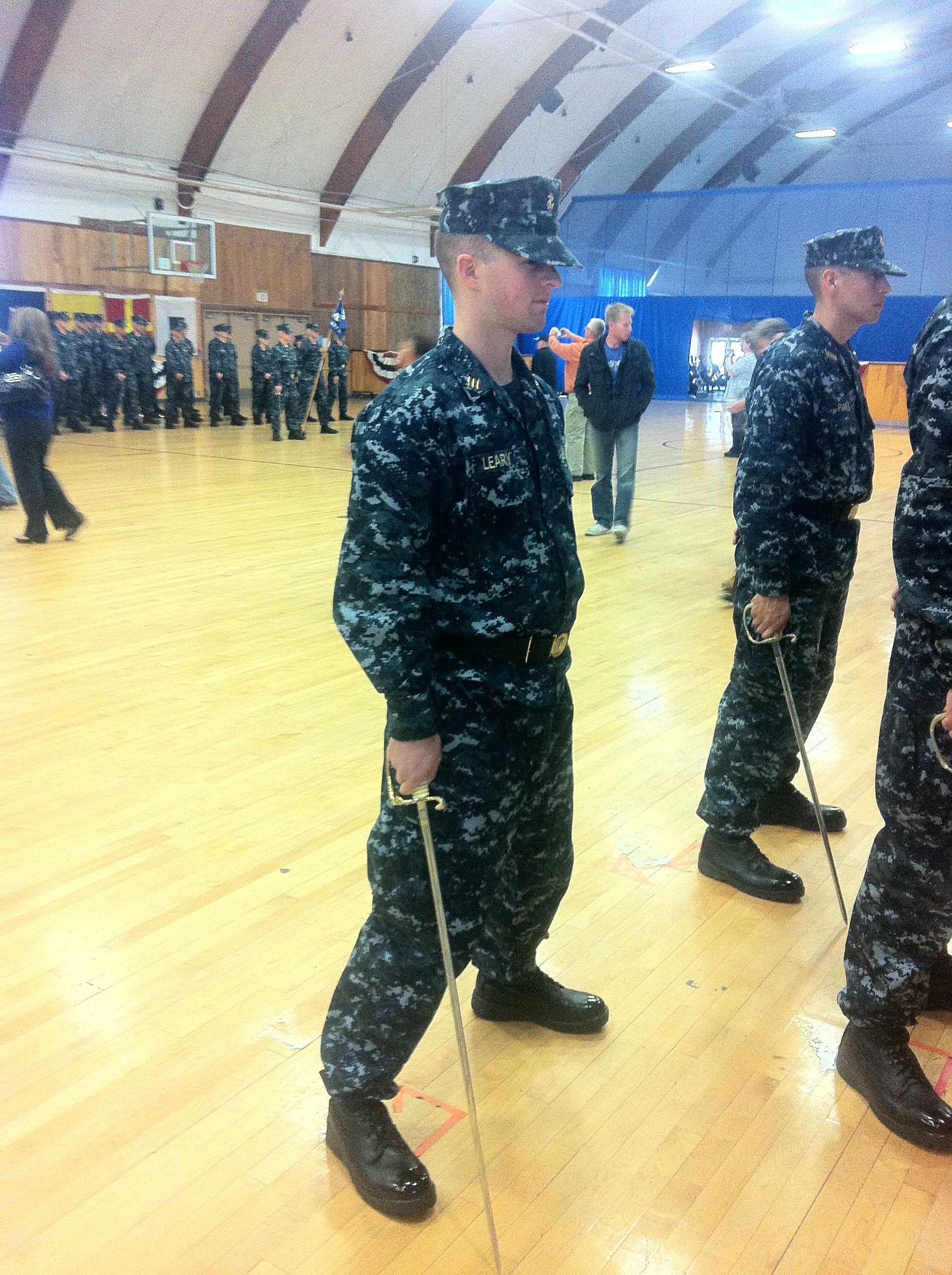
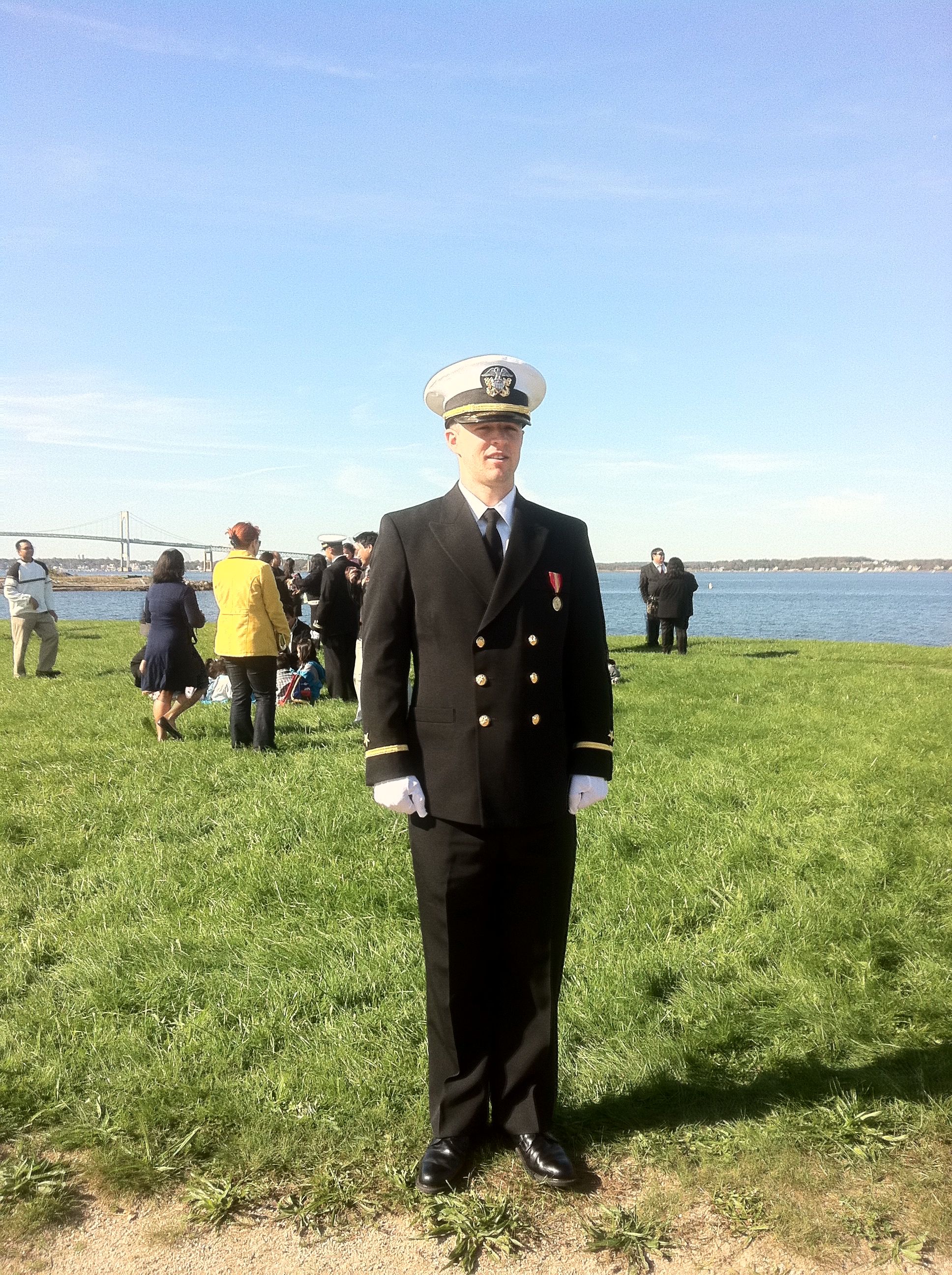
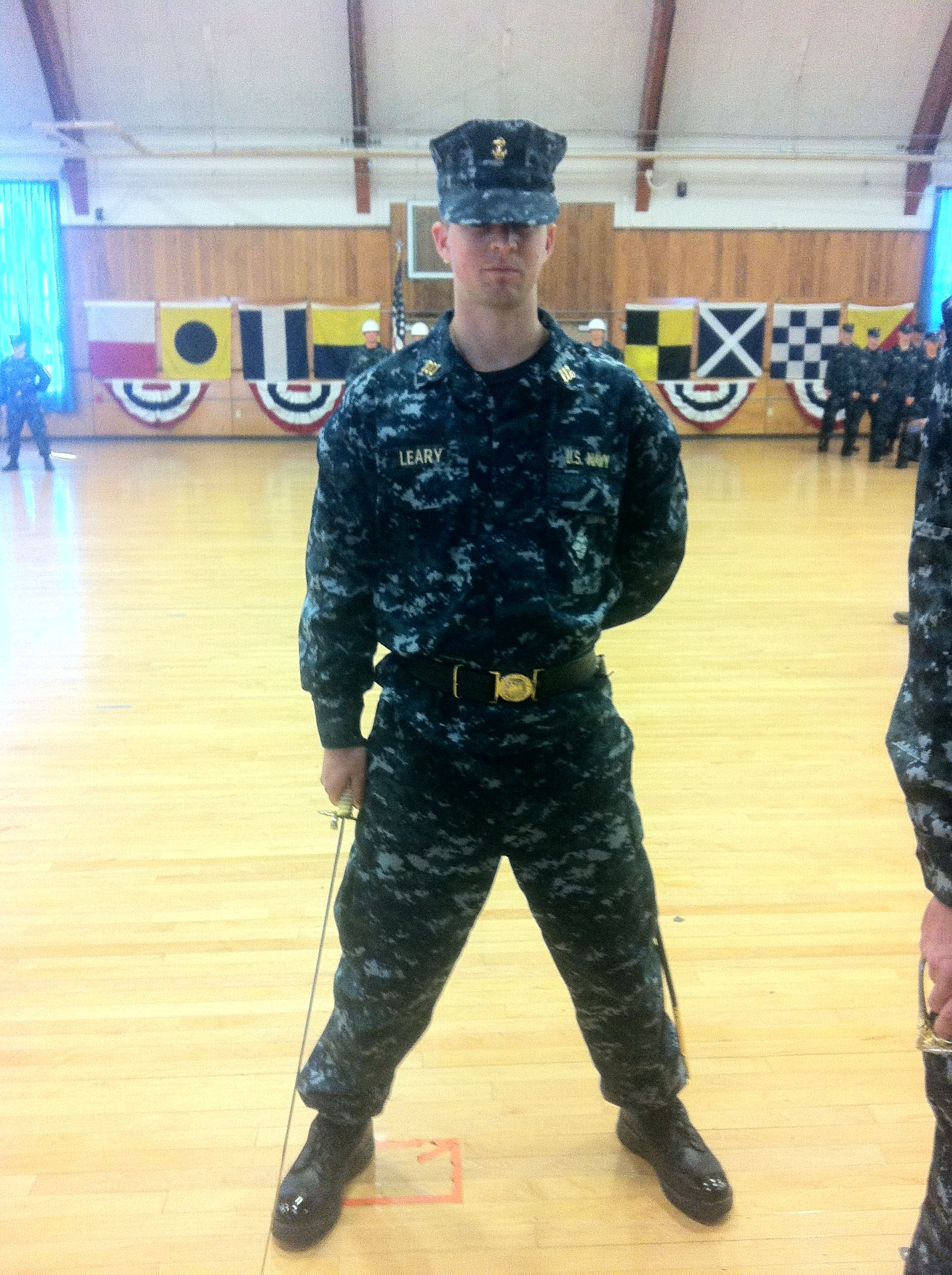
As you near OCS graduation you will receive "orders" to your next duty station, Navy Nuclear Power Training Command (NNPTC), in Charleston, South Carolina. Your orders will specifiy exactly what day you need to arrive to begin your nuclear power training, though usually it's 30-60 days after OCS graduation and you may receive Officer Hometown Area Recruiting Program (OHARP) duty during that time (more below).
🔮 Navy Nuclear Power School (NNPS) Charleston, SC
NNPTC is actually located about 30 minutes north of Charleston in Goose Creek (see map below). As an officer, you will live "off-base" such that you will need to locate your own housing while living there. Typically officers live in Charleston proper, Mt. Pleasant, and James Osland though some folks live as far as Isle of Palms and Folly Beach. My personal recommendation? Enjoy the Charleston city life. There's lots of great bars and restaurants there, the commute is manageable, and the beach is a short drive away.

What is Officer Hometown Area Recruiting Assistance Program (OHARP)?
It is very common for your "class-up" date to be 30-60 days after your OCS graduation date. During this time, the Navy usually affords you what is called Officer Hometown Area Recruiting Assistance Program (OHARP) duty where you are allowed to travel home at no expense to the Navy (you pay for any travel and lodging) for a brief respite after the intense training at OCS. You are temporarily attached to whatever Navy Recruiting District (or Talent Acquistion Group) covers the area you are assigned OHARP (usually your home of record) and assist them in their recruiting efforts. Since March 2020 (COVID), OHARP has been on largely hold to prevent unnecessary travel, but as of November 2020 I have seen OHARP duty printed in some folks orders for a period of 2-3 weeks.



